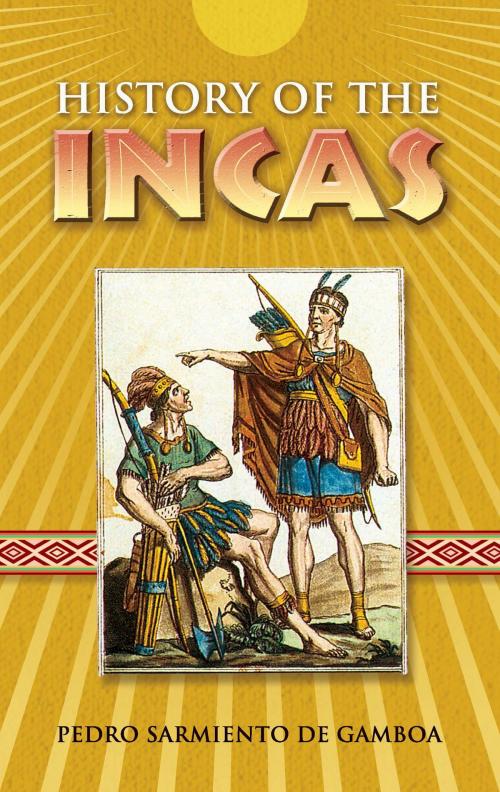| Author: | Pedro Sarmiento de Gamboa | ISBN: | 9780486147055 |
| Publisher: | Dover Publications | Publication: | April 30, 2012 |
| Imprint: | Dover Publications | Language: | English |
| Author: | Pedro Sarmiento de Gamboa |
| ISBN: | 9780486147055 |
| Publisher: | Dover Publications |
| Publication: | April 30, 2012 |
| Imprint: | Dover Publications |
| Language: | English |
This rare manuscript — written by a Spanish military officer and dedicated to King Philip II of Spain in 1572 — is considered one of the primary sources of information on the pre-Conquest history, traditions, and chronology of the Incas. One of the most authentic and reliable records of the period, it was based on carefully verified evidence provided by the Incas themselves.
Rich in details, this authentic study not only contains full accounts of ceremonies, festivals, and religious beliefs, it also includes detailed narratives of the origin of the Incas, ancient systems of land division, early settlements, biographical sketches of major rulers, the Incas’ law and administration, the coming of the Spanish conquistadores, the execution of Atahualpa — the last Inca emperor — and much more. Sarmiento’s fascinating history is followed by Captain Baltasar de Ocampo’s sensitively written account of events leading up to the 1571 execution of the ill-fated Tupac Amaru, a young heir of the Inca rulers, and Ocampo’s description of events in the province of Vilcapampa during the first decades of Spanish settlement.
Accompanied by a lexicon of Quechua words, a list of place names, and an extensive bibliography that includes important contemporary documents, this affordable reprint of History of the Incas will be of great interest to students of the ancient cultures of South America, and of the Incas in particular.
This rare manuscript — written by a Spanish military officer and dedicated to King Philip II of Spain in 1572 — is considered one of the primary sources of information on the pre-Conquest history, traditions, and chronology of the Incas. One of the most authentic and reliable records of the period, it was based on carefully verified evidence provided by the Incas themselves.
Rich in details, this authentic study not only contains full accounts of ceremonies, festivals, and religious beliefs, it also includes detailed narratives of the origin of the Incas, ancient systems of land division, early settlements, biographical sketches of major rulers, the Incas’ law and administration, the coming of the Spanish conquistadores, the execution of Atahualpa — the last Inca emperor — and much more. Sarmiento’s fascinating history is followed by Captain Baltasar de Ocampo’s sensitively written account of events leading up to the 1571 execution of the ill-fated Tupac Amaru, a young heir of the Inca rulers, and Ocampo’s description of events in the province of Vilcapampa during the first decades of Spanish settlement.
Accompanied by a lexicon of Quechua words, a list of place names, and an extensive bibliography that includes important contemporary documents, this affordable reprint of History of the Incas will be of great interest to students of the ancient cultures of South America, and of the Incas in particular.















